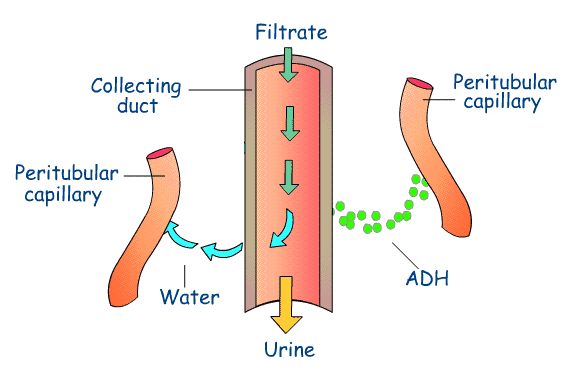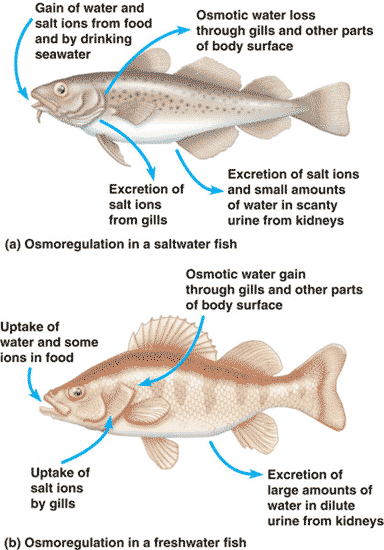osmoregulation
Osmoregulation is the process in which an organism maintains water balance by compensating for water loss, avoiding excess water gain, and maintaining the proper osmotic concentration of the organism's fluids. Osmoregulation, a process that utilizes the negative feedback mechanism, is involved in the maintenance of water in humans, animals, fishes, and plants.
in plants
Plants regulate the amount of water that enters their system by altering the pressure potential since the solute potion of the environment cannot be changed. For example, if a plant is contained within a hypotonic solution, a large amount of water will enter into the plant's vacuoles. In using the negative feedback mechanism, the plant will increase the turgor pressure inside the cell to push the water out against the cell wall to prevent the plant's cells from lysing.

in a paramecium
A paramecium is a single-celled eukaryotic organism with membrane-bound organelles. In the event that it is contained inside a hypotonic solution, the vacuole is quickly filled with large amounts of water. Through osmoregulation, the vacuole uses energy to contract and push the water out of the vacuole and out of the cell into the environment to maintain stability.
In both cases of the paramecium and the plants, when the water enters the cell, the water is flowing with, or down, the concentration gradient from a high to low concentration. Through osmoregulation, however, water is flowing against, or up, the concentration gradient from a low to high concentration.
in HUMANS
In the human body, the brain, specifically the hypothalamus, detects changes in the amount of water in the blood. If the blood is too concentrated, the pituitary gland secretes a hormone called ADH. This hormone causes the kidney to re-absorb water from the ultra-filtrate. As a result, the concentration of the blood is reduced and very small quantities of very concentrated urine is expelled from the body. Through negative feedback, the pituitary gland makes less ADH as blood returns to a stable osmotic concentration.

in fish
Since fish are constantly found in aqueous environments, it is important for them to possess the capabilities of regulating the osmolarity inside their cells. This is where their gills fill the crucial role in the survival of all types of fish.
In a saltwater, hypertonic ocean, for example, fish utilize their gills to allow water in, but filter the electrolytes out. As a result, the fish excretes concentrated urea in an attempt to preserve as much water within its cells.
In a freshwater, hypotonic river, however, the gills flip and instead filter out the water using active transport to keep the electrolytes inside.
